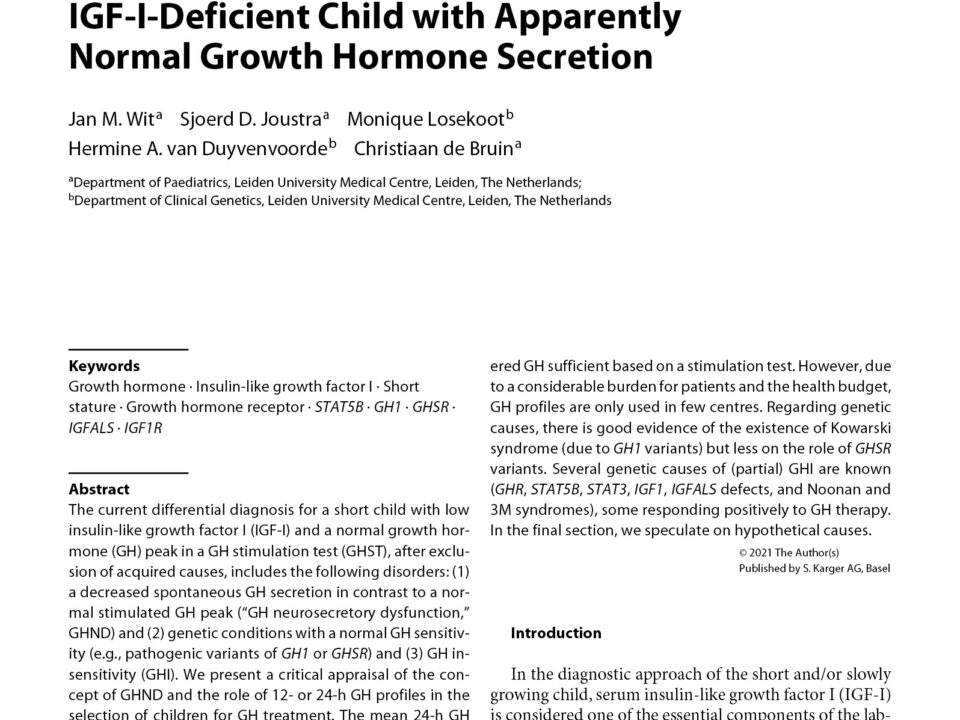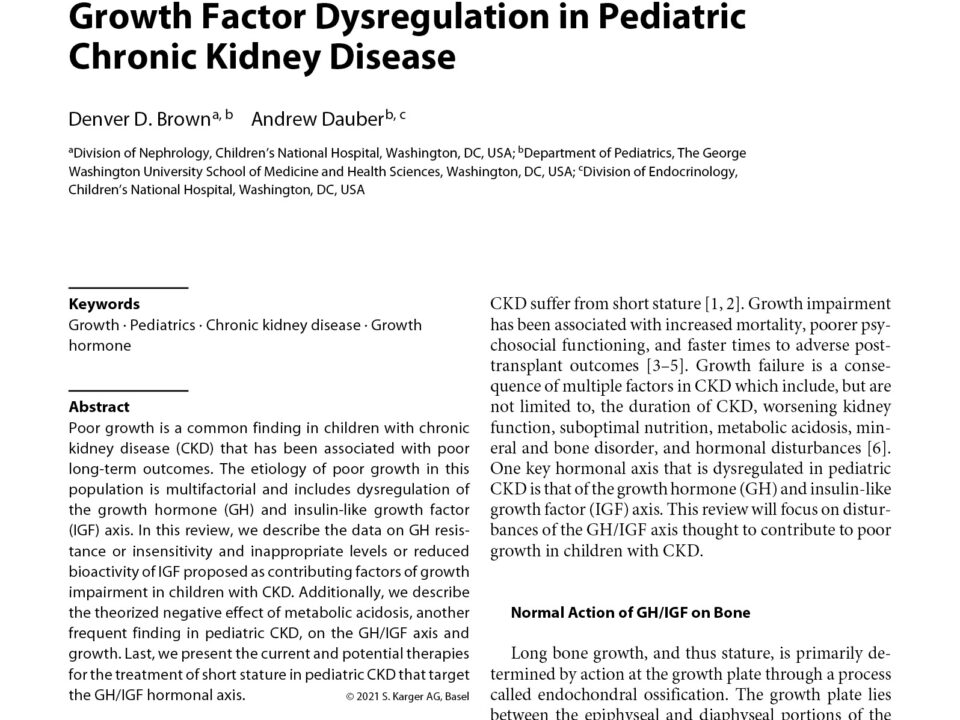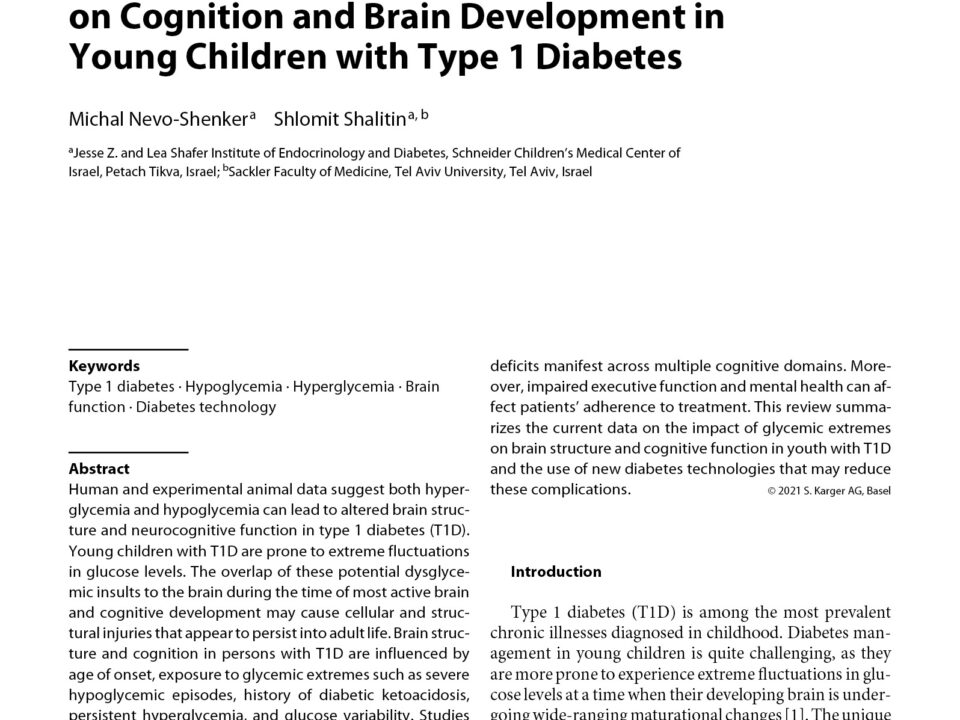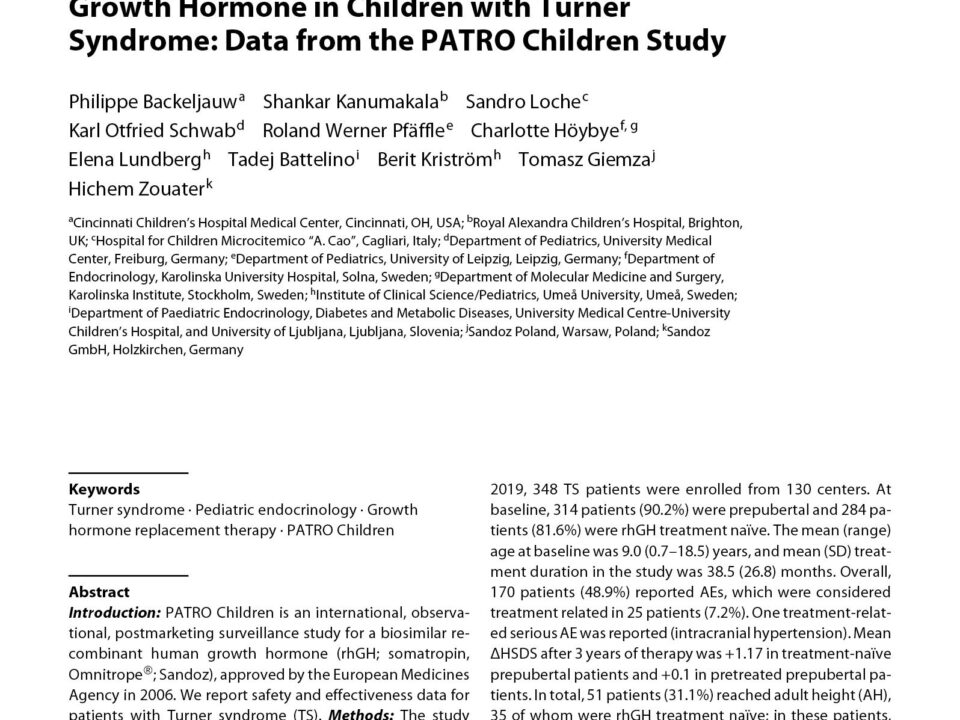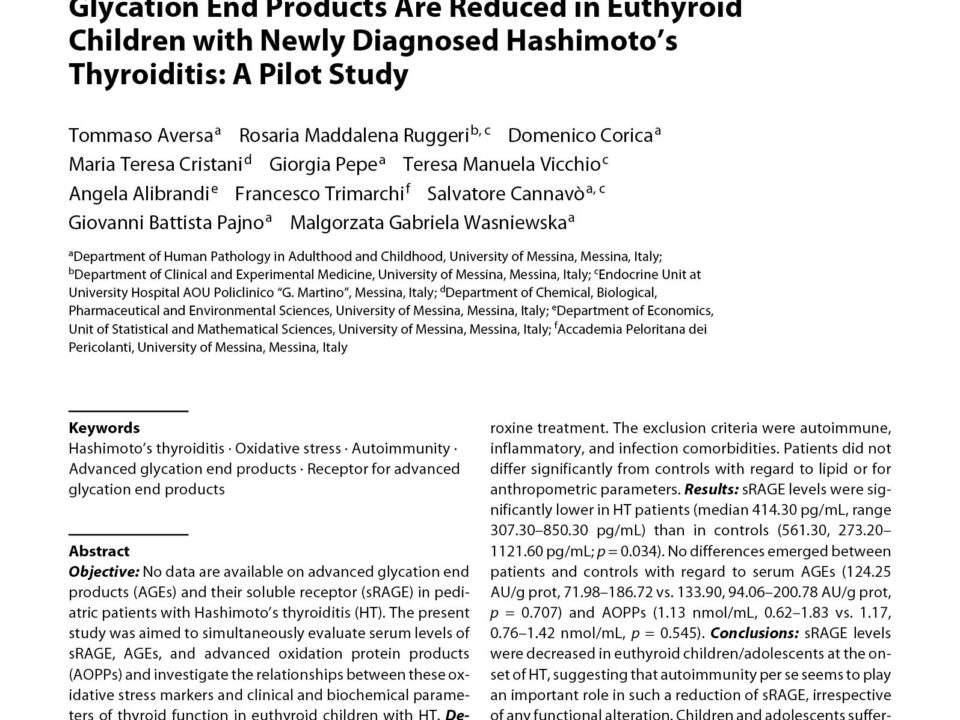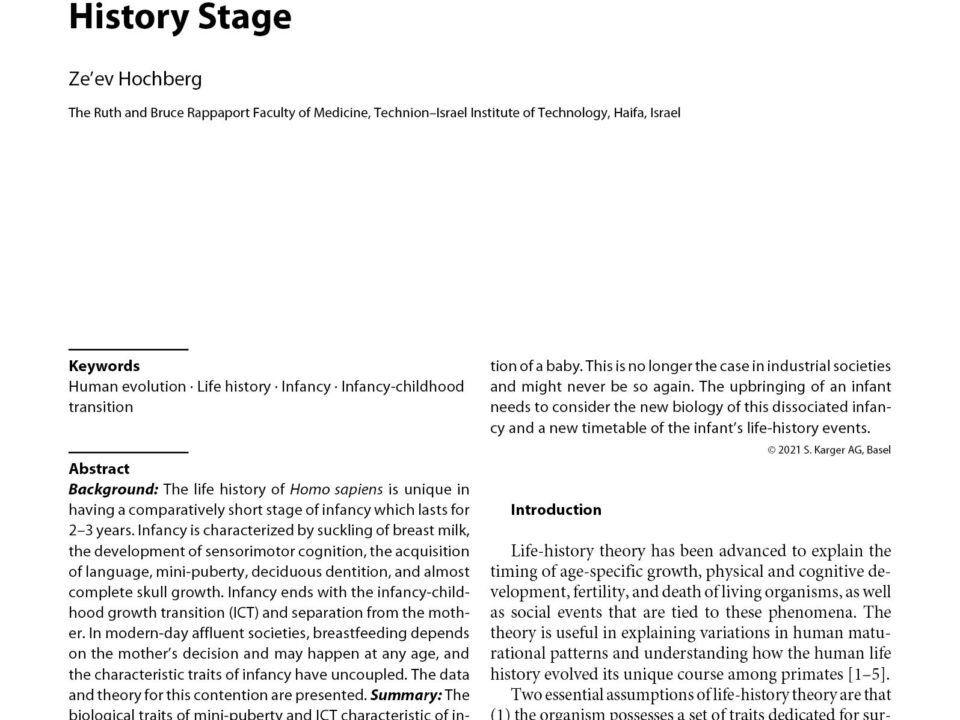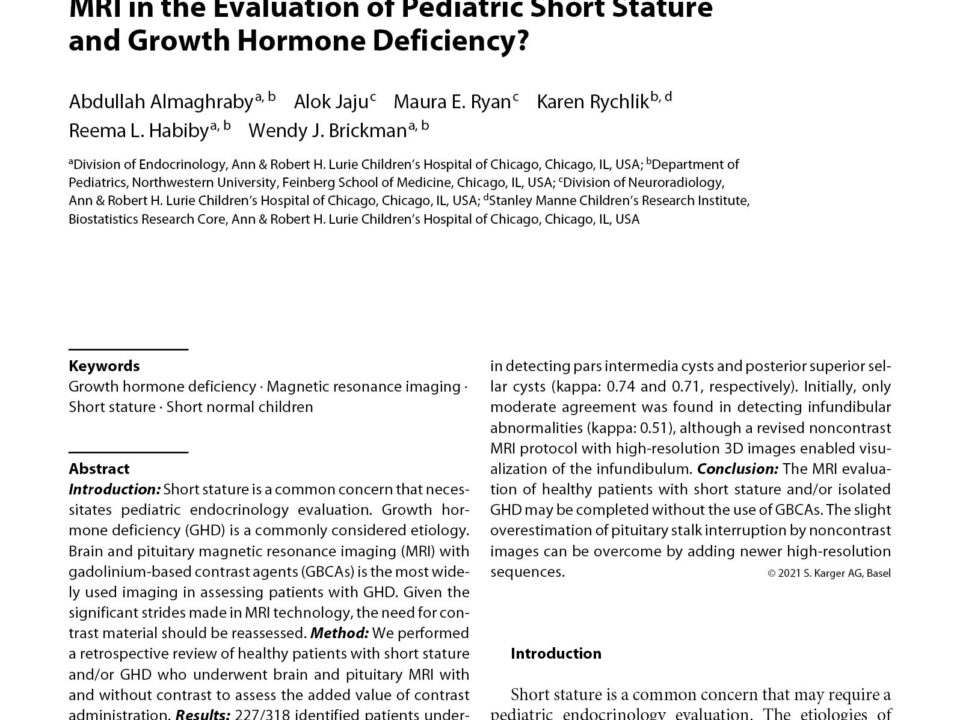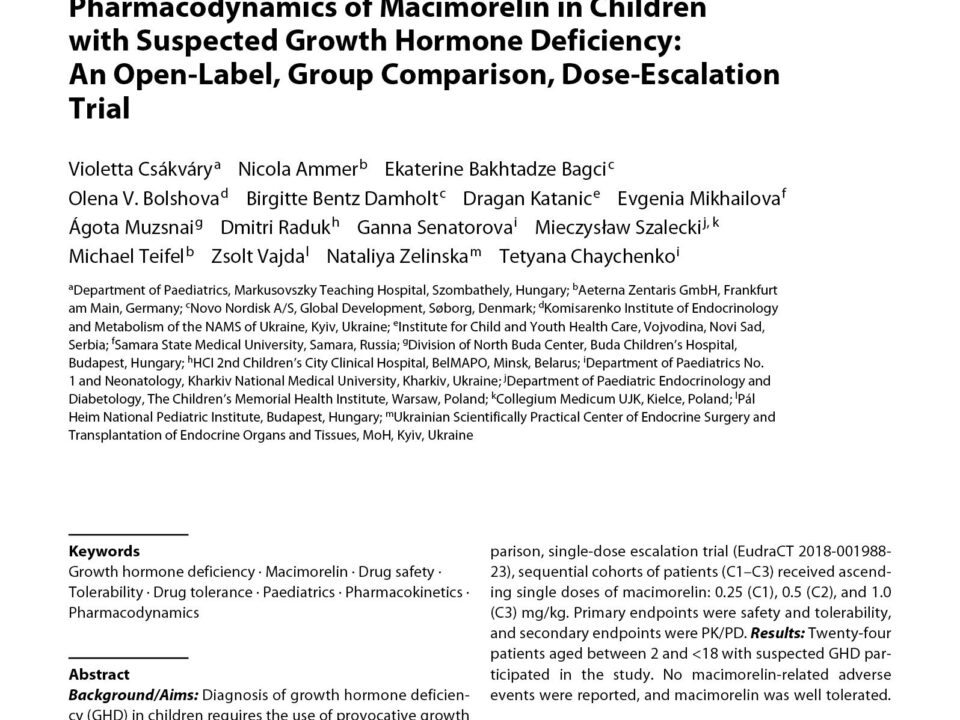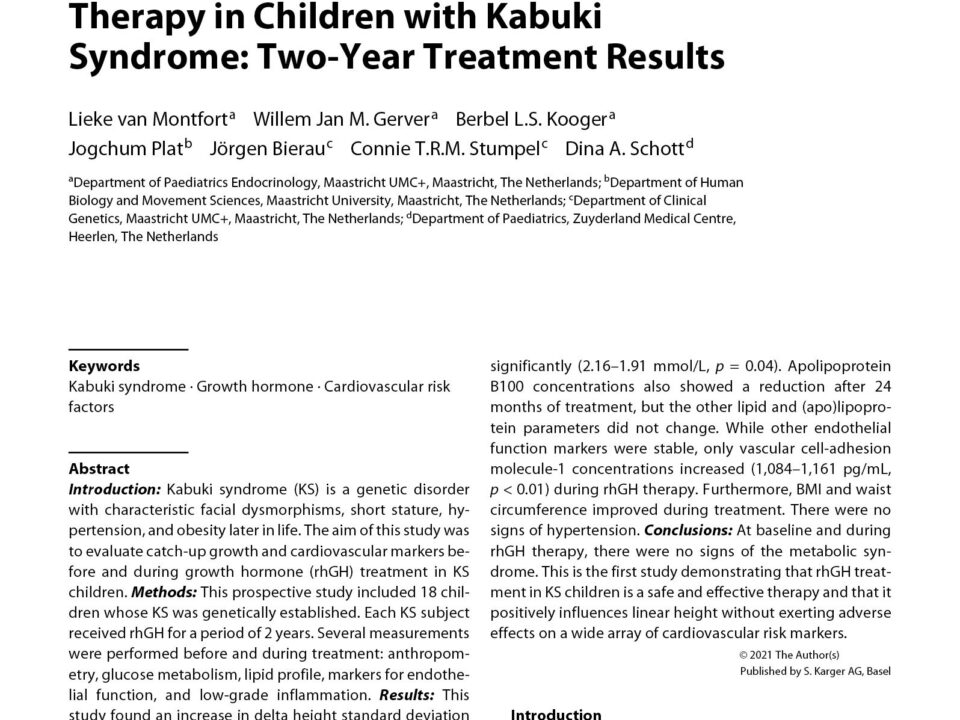December 13, 2022
The current differential diagnosis for a short child with low insulin-like growth factor I (IGF-I) and a normal growth hormone (GH) peak in a GH stimulation test (GHST), after exclusion of acquired causes, includes the following disorders: (1) a decreased spontaneous GH secretion in contrast to a normal stimulated GH peak (“GH neurosecretory dysfunction,” GHND) and (2) genetic conditions with a normal GH sensitivity (e.g., pathogenic variants of GH1 or GHSR) and (3) GH insensitivity (GHI). We present a critical appraisal of the concept of GHND and the role of 12- or 24-h GH profiles in the selection of children for GH treatment. The mean 24-h GH concentration in healthy children overlaps with that in those with GH deficiency, indicating that the previously proposed cutoff limit (3.0–3.2 μg/L) is too high. The main advantage of performing a GH profile is that it prevents about 20% of false-positive test results of the GHST, while it also detects a low spontaneous GH secretion in children who would be considered GH sufficient based on a stimulation test. However, due to a considerable burden for patients and the health budget, GH profiles are only used in few centres. Regarding genetic causes, there is good evidence of the existence of Kowarski syndrome (due to GH1 variants) but less on the role of GHSR variants. Several genetic causes of (partial) GHI are known (GHR, STAT5B, STAT3, IGF1, IGFALS defects, and Noonan and 3M syndromes), some responding positively to GH therapy. In the final section, we speculate on hypothetical causes.
December 13, 2022
Poor growth is a common finding in children with chronic kidney disease (CKD) that has been associated with poor long-term outcomes. The etiology of poor growth in this population is multifactorial and includes dysregulation of the growth hormone (GH) and insulin-like growth factor (IGF) axis. In this review, we describe the data on GH resistance or insensitivity and inappropriate levels or reduced bioactivity of IGF proposed as contributing factors of growth impairment in children with CKD. Additionally, we describe the theorized negative effect of metabolic acidosis, another frequent finding in pediatric CKD, on the GH/IGF axis and growth. Last, we present the current and potential therapies for the treatment of short stature in pediatric CKD that target the GH/IGF hormonal axis.
December 13, 2022
December 13, 2022
December 13, 2022
December 13, 2022
December 13, 2022
December 13, 2022
